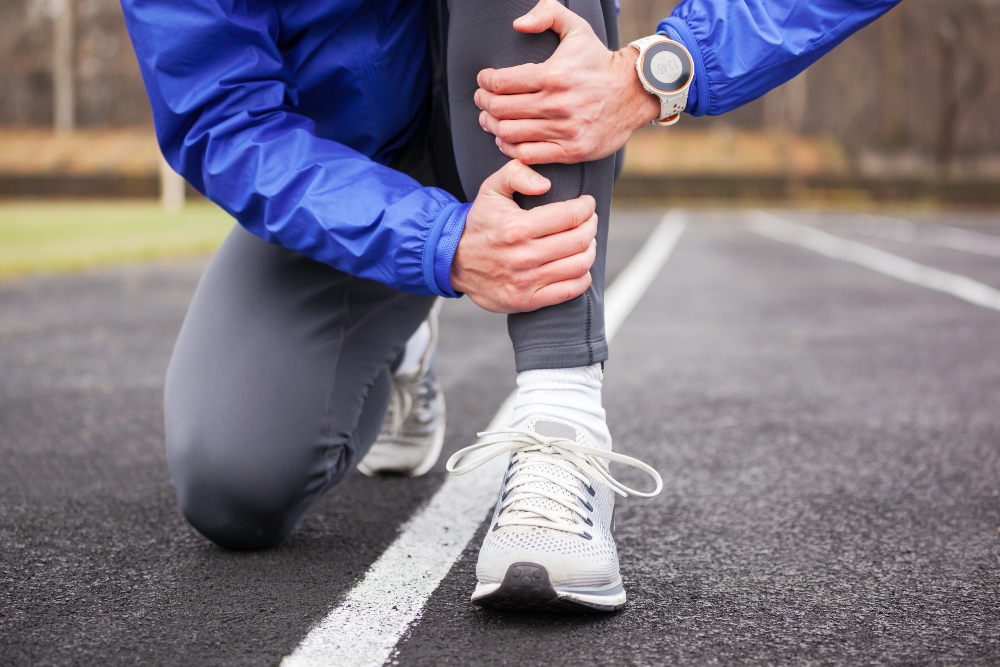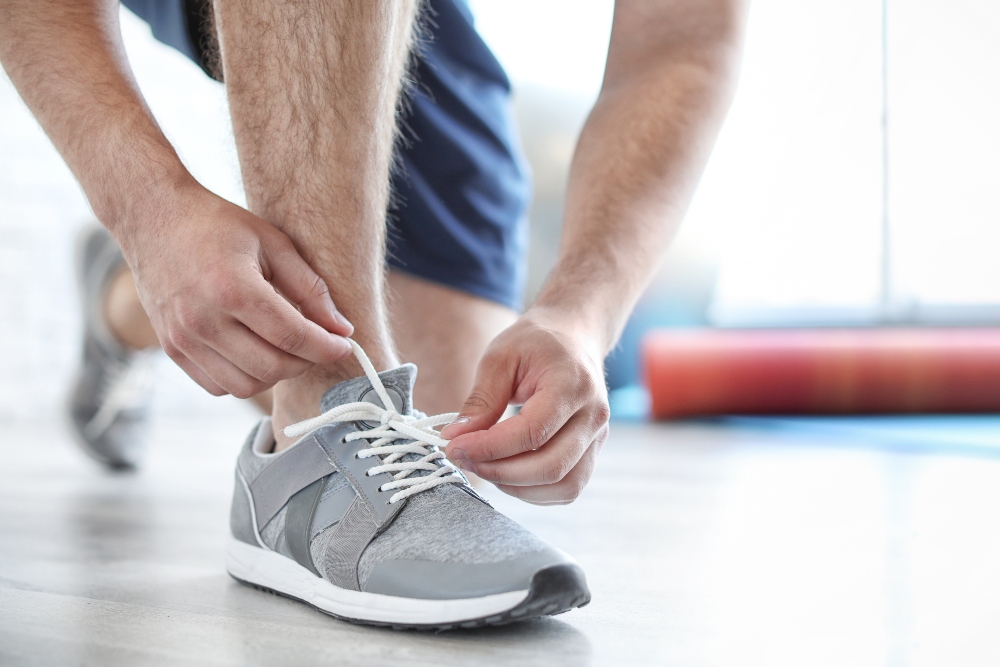Your new running routine makes you feel healthy and energetic, but there’s one problem: those darn shin splints!
It seems like every time you start climbing that big hill, the aching in your lower legs becomes almost unbearable.
Let’s look at what causes that throbbing sensation and how wearing proper footwear can really help to relieve your shin pain:

What is a Shin Splint?
Shin splint pain occurs when the muscles connected to your shinbone, and your shinbone itself, become inflamed. This irritation is usually the result of stress to your muscles, tendons and bone tissues— that’s why it’s more formally referred to as medial tibial stress syndrome, AKA stress on your leg bone (the tibia).
What causes this stress? Usually, shin splints are the result of overuse or overworking your leg muscles and tendons. Your muscles can become tired and unable to absorb the impact of your movement, putting excessive pressure on your tibia bone. Not only can your muscles throb, but extra, repetitive activity against weakened tissue can eventually cause bone cracking or stress fractures.
Who Gets Shin Splints?
Shin splints are most commonly felt by athletes, who participate in repetitive activity on their feet. Runners are prime victims of splints and other foot related problems, for they can spend hours repeating similar, high-impact movement. They sometimes try to push through the pain to complete their challenge— overworking and overtiring connecting muscle and tissue on the tibia.
Runners aren’t the only ones who get shin splints though: dancers, military persons and those involved in sports with quick footwork like tennis, soccer, etc. can also experience this lower leg pain.

You are more likely to suffer from shin pain if you:
- Recently intensified or switched up your training routine, whether that be in duration, difficulty or frequency
- Run or exercise on uneven surfaces or up hills
- Run or exercise on hard surfaces, like concrete
- Recently began a sport or activity with quick or repetitive movements for the first time
- Have flat feet or overpronation
- Have high arches
- Don’t warm up prior to exercise
Shin Splint Symptoms
Shin splints are usually easy to identify. Those who are overworking their lower leg muscles often experience tenderness, soreness or an aching pain along their inner shinbone. Sometimes, your lower leg can even swell from the inflammation and irritation, especially if you experience bone fractures.
This pain can occur when running, jumping, going downhill/uphill, etc. It’s often intensified during the activity, but the aching can last for hours or days after, depending on the severity of the injury.
Shin Splints & Your Feet
You might be thinking, “Why are podiatrists writing about shin splints? What does this have to do with my feet or ankles?” The reality is, a lot.

Here are a few ways pre-existing conditions/poor feet and ankle care can cause or worsen shin splints:
- Flat feet. Those who suffer from overpronation or have weak arches can experience splints. Low-arched runners can also experience soft tissue and joint injuries too, like Achilles tendonitis!
- High arches. Those with high arches are more likely to suffer from bone-related injuries like shin splints, or stress fractures.
- Misalignment. Misaligned feet can cause weak ankles, leg, knee, hip and body aches and put more stress on certain muscles; in this case, the muscle connecting to your tibia.
Healing Time
If you are experiencing shin splint pain, you will likely be advised to give your body time to heal or to cut back on your activity.
The suggested recovering time and care will vary based on your level of injury or pain, but if your tibia bone is crack-free and it’s just muscular stress, reducing your activity might be all you need. Oftentimes, this is a matter of decreasing the intensity, duration or frequency of your activity.
For those who suffer from bone cracking, fracturing can occur without proper rest. This will take much longer to recover from— sometimes a few weeks of rest and ceasing the activity that caused the problem.
Preventing Shin Splints
Here’s our best advice for avoiding shin splints:
- Listen to your body! If you are experiencing shin pain, stop overdoing it or reduce those high-impact workouts.
- Be mindful of form. Sloppy posture can cause stress to other areas of your body and put excessive pressure on your muscles or tibia bone.
- Get specialized care. If you have a pre-existing condition like flat foot or high arches, never do activity barefoot or without proper footwear support. You may need to consult a podiatrist for a custom fitting or special orthotics.
- Get better shoes. Always choose footwear with good support and the right fit. Shoes that are too loose or too tight and can affect your form or worn arch support can cause aching.

- Ditch the worn-out footwear. If very active, replace your sneakers or sports footwear every 6 months to ensure they have the best arch support.
- Care for your muscles. Always do a warmup and cool down stretches with activity. One important shin splint prevention stretch involves your ankles, in particular. Check out these eight exercises from ACTIVE.
- Lessen your impact. Mix less muscle-intense activities into your routine like swimming, biking, etc.
- Improve your diet! Follow these nutritional tips for improved foot and ankle health.
If experiencing pain during activity:
- Stop or reduce the intensity of your workout
- Ice your shins
- Take pain relievers
- Rest for a few days
When to See a Podiatrist
If even after rest and adjusting your routine you are still experiencing frequent shin pain, it might be time to see a professional.
You may need special footwear to reduce the chance of developing shin splints or require x-rays to check for any stress fractures.
Luckily, we’ve got a full team ready to help. Visit our contact page to make a quick appointment or give us a call today at 239.936.5400.
Categorized in: Blog